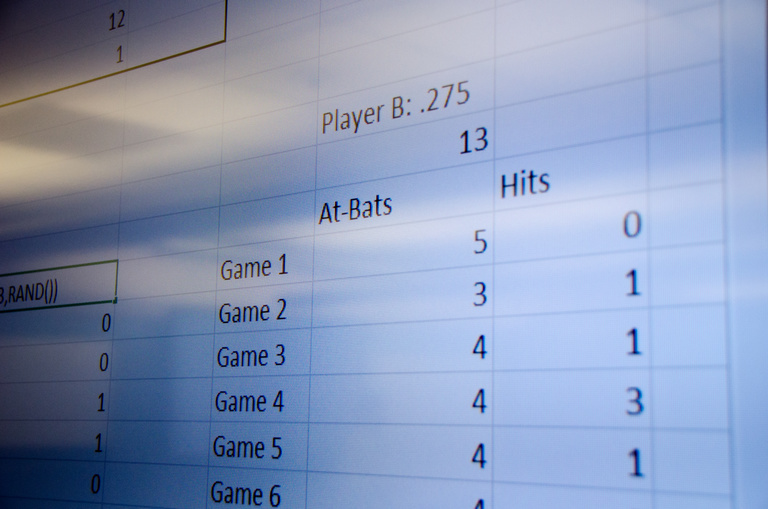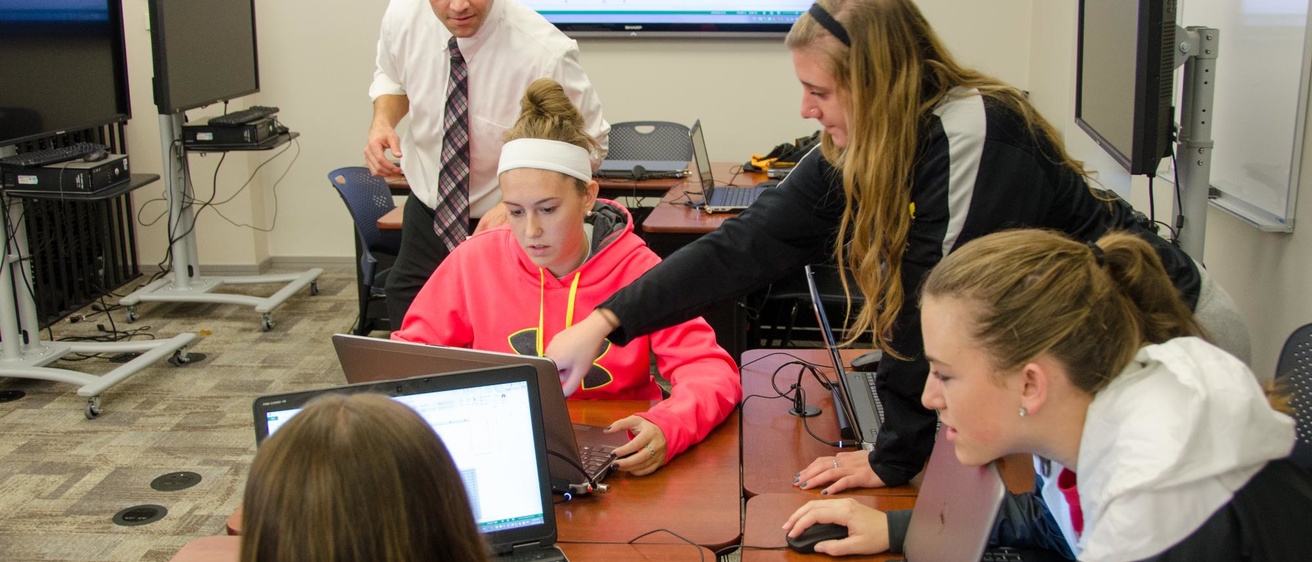Should a football team "go for it" on fourth down or punt the ball away? How likely is it that a baseball player batting .275 will outperform a ballplayer hitting .300 over the next two weeks? How in the world do you build the optimal fantasy football team?
(If you answered the last question with “Duh—use bell curves!” then you probably win your fantasy league every year.)
These might sound like debate topics for sports radio or discussions around a plate of Buffalo wings, but Jeff Ohlmann uses these scenarios as springboards toward better understanding of mathematical techniques and statistical probability in his first-year seminar, Sports Analytics (HONR:1300).

The popular, one-semester-hour honors course brings together 20 students from various academic areas: engineering, business, computer science, actuarial sciences, and pre-professional students, to name a few.
"Many students are familiar with sports; it’s something that brings out passion," says Ohlmann, associate professor of management sciences in the University of Iowa's Henry B. Tippie College of Business. "It’s the hook that I use to motivate students to apply some basic math and statistics to solve 'story problems.'"
On one particular October evening, the class looked at the September collapse of the Boston Red Sox in 2011. The team had a nine-game lead on the Tampa Bay Rays for the American League Wild Card spot, with 24 games left to play. Yet when the season ended, Tampa completed its mission to overtake Boston, leaving a team that months earlier seemed a lock for the World Series out of the playoffs entirely.
Just how unlikely was this outcome?
"To get the answer, the students provide the logical process, and I plug in mini-tutorials on the math concepts that will accomplish what the students are telling me we have to do," Ohlmann says.
In this case, the students took into account both teams’ winning percentages after 138 games, assumed both teams should maintain previous form, looked at the range of possible outcomes, and applied mathematical functions to the data to determine the likelihood of Tampa making up nine games in the standings. The scenario was simulated 10,000 times; it was determined that the Rays would overcome the Sox just 0.4 percent of the time. Or once every 250 seasons. (Writer’s note: as a Yankees fan, this topic was fascinating.)
While these numbers might provide great fodder for rival sports fans, they also provide first-year UI students with a jump-start on building their mathematical and statistical skill set.
"In later courses, students will get a more formal and thorough instruction in the mathematical and statistical methods," Ohlmann says. "My focus in the seminar is the problem-solving thought process."
A valuable skill, regardless of area of study—or team allegiance.
